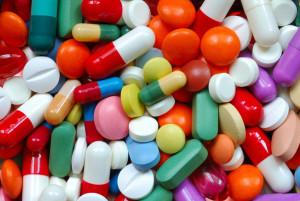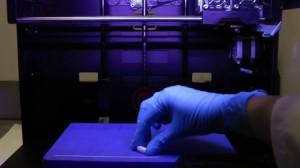 In a presentation to American Heart Association Scientific Sessions (AHASS) a group of medical researchers from North Carolina’s Wake Forest University developed a method to 3D print custom medications in pill form. Typically pre-formulated medicines do not take into account an individual’s body weight, gender, race or organ functions, which means that patients are often prescribed either too much or too little medication. However, the 3D printed pills would contain specific doses of medications based on the patient’s medical and biological profile, which could increase the effectiveness and minimize many of the side-effects.
In a presentation to American Heart Association Scientific Sessions (AHASS) a group of medical researchers from North Carolina’s Wake Forest University developed a method to 3D print custom medications in pill form. Typically pre-formulated medicines do not take into account an individual’s body weight, gender, race or organ functions, which means that patients are often prescribed either too much or too little medication. However, the 3D printed pills would contain specific doses of medications based on the patient’s medical and biological profile, which could increase the effectiveness and minimize many of the side-effects.
At the AHASS meeting, professor of internal medicine at Wake Forest University Min Pu, MD made the case for the potential benefits of developing precision medication using 3D printing. Dr.Pu and his fellow researchers created a prototype for a customized 3D printed pill process, including a computer algorithm, 3D printing software and automatic dosage-adjustment capabilities. Once the individual patient’s’ medical and biological information has been input into the algorithm, the software will calculate their personalized dose and then generate the data required to 3D print custom pills.
“Our study uses the volume-concentration method to generate 3D-printed pills. What’s different from current pharmaceutical industrials is that we use a computer algorithm to design and calculate dosages according to patients’ biological and clinical parameters instead of using pre-determined dosages. Therefore, we can instantly create personalized pills. These personalized pills are then converted to 3D printable files and the pills can then be accurately printed using a 3D printer,” Dr. Pu explained to .
 The research team tested the accuracy of 5 separate (80 pill) doses and then 3D printed the pills using those custom mixes. The pills that were successfully 3D printed ranged in dosage from 124 mg to 373 mg and showed a very high rate of reproducibility, with individual pills in the same 80-pill group showing an average variance of 3 mg to 5 mg. When the same doses of the 3D printed pills were compared to standard computer-generated volumes there was only a 0.5% to 0.6% difference between both batches, which clearly proves that the pills can be accurately replicated using the 3D printing software. According to Dr. Pu, his study shows that 3D printing precision medicine based on a patient’s individual pathology and physical and medical profiles is possible and potentially a new way to more treat them with more accuracy.
The research team tested the accuracy of 5 separate (80 pill) doses and then 3D printed the pills using those custom mixes. The pills that were successfully 3D printed ranged in dosage from 124 mg to 373 mg and showed a very high rate of reproducibility, with individual pills in the same 80-pill group showing an average variance of 3 mg to 5 mg. When the same doses of the 3D printed pills were compared to standard computer-generated volumes there was only a 0.5% to 0.6% difference between both batches, which clearly proves that the pills can be accurately replicated using the 3D printing software. According to Dr. Pu, his study shows that 3D printing precision medicine based on a patient’s individual pathology and physical and medical profiles is possible and potentially a new way to more treat them with more accuracy.
“Pharmacogenetics, which matches patients to drugs based on DNA information, offers an opportunity to provide care, treatment, and medicines customized to the individual. This type of personalized precision medicine requires physicians to prescribe customized drug products containing unique drug-dosage combinations and/or formulations specifically for individual patients,” continued Dr. Pu.
 The conclusions from the study are only preliminary findings and the team says that they need to do more research on the method’s effectiveness for individual types of medications and to develop a standard adjustment formula for different types of drugs. They will also need to examine how cost-effective the 3D printed pill process is in comparison to how effective the personalized care works on an individual basis. Custom pills may reduce certain side-effects, but depending on the cost many patients may not find that to be a compelling reason to pay more for them.
The conclusions from the study are only preliminary findings and the team says that they need to do more research on the method’s effectiveness for individual types of medications and to develop a standard adjustment formula for different types of drugs. They will also need to examine how cost-effective the 3D printed pill process is in comparison to how effective the personalized care works on an individual basis. Custom pills may reduce certain side-effects, but depending on the cost many patients may not find that to be a compelling reason to pay more for them.
There is also the issue of most pharmacies being ill-equipped to provide medication compounding services. Most hospitals still compound medications, but typically only for intravenous medications not oral pills. Many pharmacists will simply not have the training needed to compound the medication accurately. Dr. Pu and his team don’t see the 3D printed pill process as a replacement for the standard medication manufacturing methods currently used by the pharmaceutical industry. Rather they see it as a potential option available to doctors who are treating specific types of medical problems or with patients who are especially sensitive to medications.
There is also the potential to produce compound pills of several different prescribes medications into a single pill, either for convenience or patients who have difficulties swallowing multiple pills. The process is also ideal for clinical trials, which are usually designed for the average patient. 3D printed pills customized for individual trial participants would provide a much more accurate set of data and potentially lead to safer medications. Are 3D printed pills the future of medication? Let us know in the thread on 3DPB.com.
Subscribe to Our Email Newsletter
Stay up-to-date on all the latest news from the 3D printing industry and receive information and offers from third party vendors.
You May Also Like
3D Printing Unpeeled: New Arkema Material for HP, Saddle and Macro MEMS
A new Arkema material for MJF is said to reduce costs per part by up to 25% and have an 85% reusability ratio. HP 3D HR PA 12 S has been...
3D Printing News Briefs, January 20, 2024: FDM, LPBF, Underwater 3D Printer, Racing, & More
We’re starting off with a process certification in today’s 3D Printing News Briefs, and then moving on to research about solute trapping, laser powder bed fusion, and then moving on...
3D Printing Webinar and Event Roundup: December 3, 2023
We’ve got plenty of events and webinars coming up for you this week! Quickparts is having a Manufacturing Roadshow, America Makes is holding a Member Town Hall, Stratafest makes two...
Formnext 2023 Day Three: Slam Dunk
I’m high—high on trade show. I’ve met numerous new faces and reconnected with old friends, creating an absolutely wonderful atmosphere. The excitement is palpable over several emerging developments. The high...































